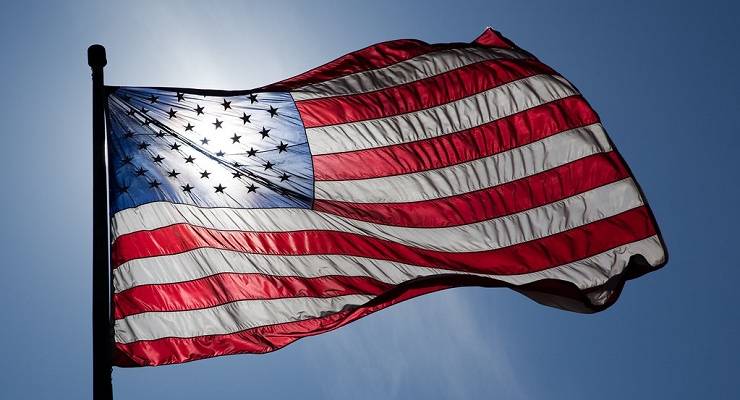
At 3.30am Sydney time tomorrow, we will get confirmation the world’s biggest economy has been brought to a dramatic and brutal halt by the coronavirus pandemic.
That’s when the initial jobless claims for last week will be reported by the US Labor Department. It’s expected to be the biggest ever rise seen in this key early warning system for the health of the US economy.
Last week, the Labor Department showed the number of Americans filing for unemployment benefits had surged to 281,000, up from 211,000 the week before, as companies across America’s services sector and some of its biggest industries, like airlines, laid off workers.
Some economists estimate tomorrow’s jobs claim figure could end up above 2 million; Goldman Sachs predicts from 2.6 million to 3 million, numbers unthinkable a fortnight ago. Figures out Wednesday showed more than a million people have applied for unemployment benefits in California alone.
According to Bank of America Merrill Lynch the number could be 3 million, more than four times the record high set in the depths of the 1982 recession. The Economic Policy Institute has a similar forecast. And it’s just the start of a surge that could send the jobless rate spiking to 20% from today’s 3.5%, a JPMorgan Chase economist told clients on a conference call last Friday.
Federal Reserve Bank of St. Louis President James Bullard (who is not a voting member of the Open Markets Committee this year) forecasts the US unemployment rate to hit 30%, and GDP to contract 50%, in the coming months. “This is a planned, organised partial shutdown of the US economy in the second quarter,” he said.
Ratings agency Moody’s also issued a commentary over the weekend, noting “the long-term consequences will depend not only on the depth and duration of the hit to economic output, but on whether it will cause lasting damage to balance sheets of households and businesses. Without policy support, many businesses that depend on a constant stream of revenue will close and lay off their workers”.
Moody’s identified transport, energy, hospitality, consumer services, leisure and, surprisingly, healthcare as sectors at risk. “In the worst case, entire industries could be destroyed.”
“The demand shock from consumers scaling back spending is bound to be severe, resulting in outright loss of economic output. Much of this loss will be permanent. In particular, the loss of service sector output will be unrecoverable for the most part. And even in the manufacturing sector, the damage from production shutdowns, even if temporary, will not be fully recovered.”
Moody’s also warned that the impacts may not be as shortlived as optimists, and the likes of President “Easter Sunday” Trump, believes: it fears “a self-fulfilling vicious cycle of deteriorating confidence, weak earnings expectations, lower business investment, retrenchment in employment and a further pullback in consumer spending”.
In an update yesterday, the agency went further, saying G20 economies “will experience an unprecedented shock in the first half of this year and will contract in 2020 as a whole, before picking up in 2021. We have revised our growth forecasts downward for 2020 as the rising economic costs of the coronavirus shock and the policy responses to combat the downturn are becoming clearer. We now expect G20 real GDP to contract by 0.5% in 2020”. That compares to a forecast of 2.6% growth last November.
Moody’s thinks both Australia and New Zealand have “strong institutional capacity … to develop emergency fiscal responses during an unprecedented global shock” while noting “a high degree of fiscal flexibility that allows for larger near-term budgetary expenditure without threatening longer-term fiscal strength”.
And far from seeing a massive surge in survival spending as a threat to our credit rating, Moody’s actually takes the opposite view: “it highlights the flexibility and capacity that both governments possess to utilize fiscal policy to support their credit profiles amid an increasingly difficult global economic environment.”
It’s a clear sign of how catastrophic the crisis is that even ratings agencies are calling for governments to get out and fire every fiscal bullet they’ve got and any they can borrow.








With an election coming up too …..
If this pandemic kills off the ratings agencies it would be no bad thing. But I fear ratings agencies are like cockroaches – they will survive while everything around them dies.
To me the ratings agencies serve no useful purpose for society.
When will these economists wake up to how a fiscal stimulus works, its not how you spend it, its where you spend it, the bulk must go to ordinary and everyday consumers to stimulate business and retail demand, all then follow on, and this stimulus doesn`t need to be repaid, its printed money and can be slowly redrawn from circulation over as many years as needed so as not to again restrict the economy, conservative governments use the stimulus to distribute even more to their rich mates and benefactors that’s what turns recessions to depressions and that’s what Scummo is doing right now.
“and, surprisingly, healthcare as [one of the] sectors at risk”
Bernard, please explain!
Yeah, private health insurance, as Ross Gittins describes it, a tax on the innumerate.
“We now expect G20 real GDP to contract by 0.5% in 2020”
Seems incredibly optimistic.